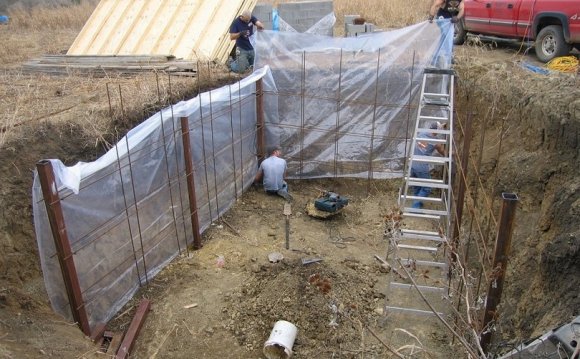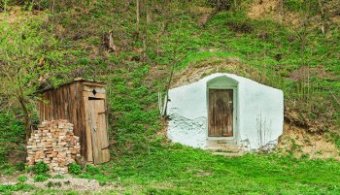
 PHOTO: iStock/Thinkstock
PHOTO: iStock/Thinkstock
You stroll out into the garden, picking ripe fruits and vegetables, knowing that come February you’ll still be enjoying their freshness. For those of us attracted to the romantic aspects of small-farm life, this is an appealing scenario.
In very cold areas, there may also be a second door at ground level to further insulate the cellar. Modern survivalists have been particularly inventive about constructing root cellars, and have made enormous root cellars from sections of metal culvert (these serving also in some cases as potential underground shelters in which people could live for long periods of time). In other cases, simple root cellars constructed from barrels, pallets or packing crates serve the purpose of creating an underground storage area for a quantity of emergency food.
Regardless of the specific style, the basis of any root cellar is the insulative value of the soil into which the cellar is dug. With only as little as one foot of earth above it, a root cellar dug into flat ground can create a temperature of 20 degrees less than the summertime temperatures above. Several feet of soil, optimally at least three or four, will suffice in most cases, but one must have a full 10 feet of soil above and alongside to ensure the maximum possible insulation and temperature stability.
An obvious rule of construction is to keep the doorway and any exposed parts of the structure in the shade during the day. Building on the north side of a hill or digging in the shade of your home or other building is one mandatory design principle.
The next consideration should be to design a structure that does not suffer from leaks or drainage problems during times of rain. This may require sloped doors, creating drainage ditches outside or positioning the floor level above the base level of the surrounding terrain.
 As mentioned previously, the most flexible root-cellar design will include two chambers, one colder and more humid than the other. This complexity certainly makes construction doubly difficult, but will also double the variety of foodstuffs that can reasonably be preserved in the cellar. Making the drier section essentially the foyer that leads to the entrance of the innermost area is the usual method of dividing the two sections of a root cellar.
As mentioned previously, the most flexible root-cellar design will include two chambers, one colder and more humid than the other. This complexity certainly makes construction doubly difficult, but will also double the variety of foodstuffs that can reasonably be preserved in the cellar. Making the drier section essentially the foyer that leads to the entrance of the innermost area is the usual method of dividing the two sections of a root cellar.
When planning the size of your cellar, general wisdom holds that an 8-foot by 8-foot area should provide plenty of storage space for the average family. Larger structures are certainly more luxurious, but also may be more difficult to insulate and maintain at an even temperature.
It is a good idea to use waterproofed wood in any construction, but be cautious of the chemicals in pressure-treated lumber. Treating wood with waterproofing materials can result in an environment in which stored food picks up the undesirable odors of the treated wood. If you can use bricks or concrete blocks for some parts of the construction, you may avoid some of those problems.
Remember to design and install a good ventilation system, and run a few smoke tests to make sure the intake and outflow vents create a siphon between them that moves air automatically through the cellar.
Finish your new root cellar with a thermometer and a humidity gauge, and from there observe and adjust until conditions produce the desired results.









